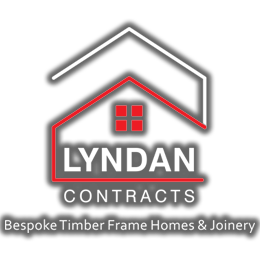An eco-friendly substitute for conventional construction
With the increasing focus on environmentally friendly practices, many people are turning to timber as a sustainable choice for building homes. Timber frames have an extended lifespan, and the rate of usage is lower than the time it takes to grow and source the wood, ensuring that there is no overproduction or excessive tree felling.
Furthermore, timber is a non-toxic material that does not emit harmful chemicals into the building. Instead, it stores carbon dioxide that would otherwise be released into the atmosphere as a greenhouse gas. This feature makes it a safer and more eco-friendly option for constructing homes.
It is possible to construct quickly and cost-effectively
By utilizing off-site manufacturing in a controlled factory setting, much of the groundwork can be completed prior to the actual build process, resulting in a quicker and more efficient construction timeline with fewer delays. This approach also provides the added benefit of allowing for more precise budgeting, as factory fabrications allow for fixed costs and exact timescales, eliminating the need for further holdups during subsequent stages of the building process. Additionally, timber’s lighter weight compared to other materials enables rapid on-site construction with lower transportation expenses and no downtime commonly associated with “wet” construction. A timber structure can be assembled and prepared for external finishes within days, without requiring any drying-out period.
Outstanding versatility and flexibility
One of the primary advantages of using timber frame construction is the virtually limitless potential it offers. Whether you’re planning to build your own custom home or develop a new residential area, timber provides unparalleled versatility.
Thanks to its lighter weight compared to other materials, timber frames can be used in challenging land conditions, such as brownfield sites, providing greater flexibility in terms of location. Additionally, timber can be clad in a range of external materials to match local regulations and planning requirements. Furthermore, pre-manufactured timber parts or kits can be purchased, making assembly a breeze.
Apart from its ease of use, timber frame construction also offers endless possibilities in terms of design. It can be used to create a broad range of styles and features, from contemporary to traditional, incorporating open-plan spaces or exposed beams to add character and the natural beauty of wood to the home’s interior aesthetics.
Optimal energy performance and insulation
Eco-friendly homes are increasingly popular, not only among buyers who want to minimize their carbon footprint but also those seeking cost-effective living solutions.
Timber is an excellent material for building energy-efficient homes due to its natural insulating properties. Its composition creates tiny air pockets that limit heat conduction, reducing the amount of energy required to heat or cool the house.
Moreover, the lightweight nature of timber allows for more insulation to be added to the building, resulting in a highly energy-efficient home, particularly when used in windows, doors, and floors. Better insulation translates to less energy consumption for heating and cooling, resulting in lower energy costs and less fossil fuel consumption.
A durable and robust option
Timber frames have a longer lifespan than alternative materials such as steel or concrete, making them a popular choice for developers and those who want to build a home that will last.
Thanks to its natural properties, wood buildings can last for centuries. Timber’s ability to absorb and release moisture gives it longevity, and its resistance to various corrosive chemicals makes it highly durable, reducing the cost of future maintenance and repairs.
Moreover, timber frames weather well in various climates, making it a great choice for external cladding. It can withstand harsh weather conditions and maintain an attractive appearance for many years.

© Copyright 2023 Lyndan Contracts
Website Built & Hosted By Ublesemp LTD
